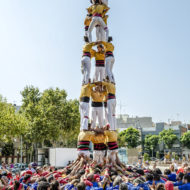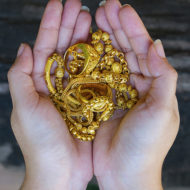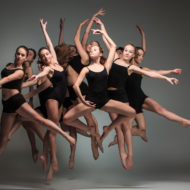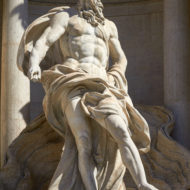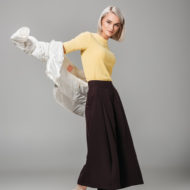
Lately I have been grappling with a girdle – not the underwear kind, the Choreutic kind. I’ve been trying to create suggestions for how to embody each of the four Girdles that Laban identified.
These spatial sequences are peripheral six-rings that surround a diagonally tilted axis. The Girdles themselves are tilted circles, part of which lies in front of the mover, and part of which lies behind the mover.
I’m quite fond of two of the Girdles that fall in front of the body and rise behind it. … Read More






